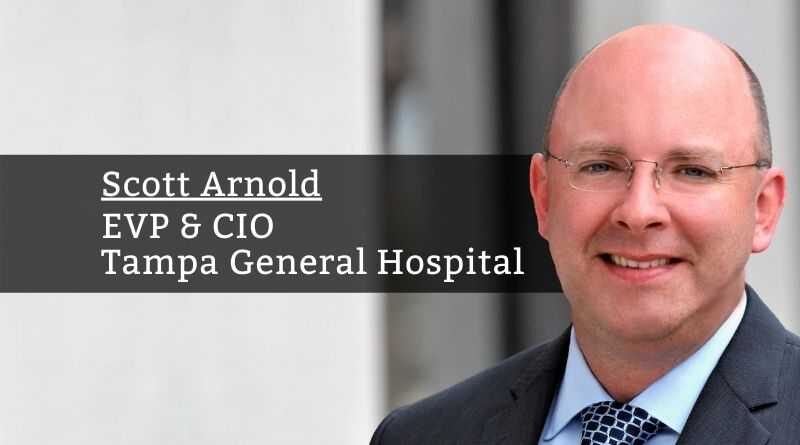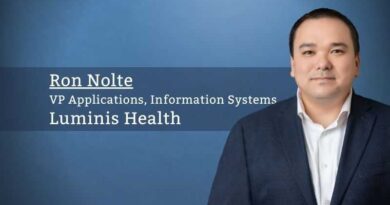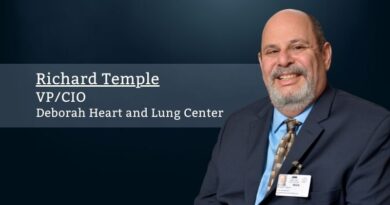Let’s give patients what they deserve, the best experience!
By Scott Arnold, EVP & CIO, Tampa General Hospital
There is no shortage of investments being made to create, optimize and fortify the “digital front door” at healthcare organizations. Consumer expectations are increasing to a point that loyalty to a health provider might be measured by access, ease and excellence of digital experience over the quality of care provided (yep, hard to believe, but consumer feedback supports this theory). But, is the digital front door a panacea for healthcare, like it was for the airlines? Not exactly.
The airlines went through a consumer renaissance that transitioned the administrative work of booking a ticket onto the consumer, and we love it. Wait, what? Yes, remember when airline call centers, ticket counters or travel agents were the only way to book air tickets? Who enjoys calling an airline call center to book a ticket now? Enter the digital experience and new standard. Consumers do the work themselves, on their own equipment, with their own network to go online and find the best flight schedule, at the best time, at the best price, pick the best seat on a preferred airline and pay all of the fees online. Did you see what happened? We are doing all of the work and we prefer it! Are there still people that ring the airline call centers, travel agents or wait in line at ticket counters? Yes, but it is typically the exception and usually a personalized situation. Oh, there it is, a personalized situation.
Personal care orchestration and low-friction experience must be a priority for patients. Let’s give patients what they deserve, the best experience!
The digital front door in healthcare is undoubtedly part of the ‘best experience’ eco-system, but it is not solely the panacea for the best patient experience. Why? Because healthcare is a personalized situation. We aren’t selling perishable airline seats traveling between Akron and Kansas City; we are in the business of healthcare. Our health situations are personal and occasionally complicated. Sometimes it is more reassuring to speak with a real person as opposed to a bot, even for digital natives!
The telephone remains the primary contact point for patients and health organizations. Call centers, contact centers and telephone agents remain a staple in most health systems to manage day-to-day inquiries, complicated situations, health questions, care navigation and other items. Can some of this load shift from a call center to a digital platform (like the airlines)? Sure. But unlike the airlines, there is still a heavier load coming through a call center for healthcare. This may never change and perhaps it should not change to preserve human touch in a business that is so personal.
With that said, envision a ‘best experience’ eco-system as a hybrid of physical and digital pathways. The physical pathways transition to digital pathways in a patient’s journey (with some back and forth). For example, a patient is given a cancer diagnosis. She is scared, uncertain about the next steps and really wants to talk with someone that understands the oncology journey and can answer her questions. The patient places a call to the health organization where a real person answers the phone with empathy for the patient’s situation, and immediately connects her to an oncology specialist assigned to support patient navigation for her diagnosis. The specialist forms a relationship with the patient, answers her questions, provides online resources and assists her with setting up initial diagnostics and specialist visits. The oncology navigator sends a text to the patient’s cell phone (with permission) with a link to resources, appointment scheduling and a number to call back anytime for questions (enter the digital front door). The patient becomes comfortable with digital navigation and manages part of her journey online (appointments, health records, information sharing, prescription refills, provider Q&A, others). When the patient receives a critical result that inspires questions (or fear), she calls the health provider and has a consistent experience getting connected to the oncology navigator to get questions answered and navigate through the next steps in her care journey. The patient finishes treatment and enters remission, but she needs annual diagnostics for monitoring and preventative health maintenance. She receives a text (checking in with her) with a link to set up her annual diagnostic appointment via the digital front door. In the following year, she receives the text again, but forgot to set up her appointments. The patient’s absence is noted by automation within the digital front door and following a few digital nudges, she is called by a real person (care navigator) to ensure her maintenance appointments and diagnostics are completed.
The oncology scenario demonstrates how both physical and digital pathways can be combined to create an optimal experience (based on preference) for personal care orchestration. This should be easy, right? Not exactly. Health organizations that have developed similar processes haven’t done this overnight. The processes and design to make this work are curated over a term that ranges from months to years. The economics of the design can be difficult if automation and technology are suboptimal. On the other end of the spectrum, some health organizations maintain the status quo with a bare minimum call center (seen as a cost center, not an engagement or experience hub) staffed with minimally skilled agents that aren’t provided toolsets or training to be successful. Turnover is high and agent satisfaction and engagement is low. Imagine, you have been diagnosed with complex disease and your first interaction with a health organization is a call center agent that doesn’t have the skills, resources or training to help you. Patients (and agents) deserve better support from health organizations. Personal care orchestration and low-friction experience must be a priority for patients. Let’s give patients what they deserve, the best experience!



